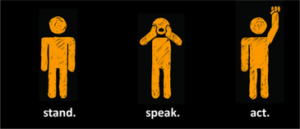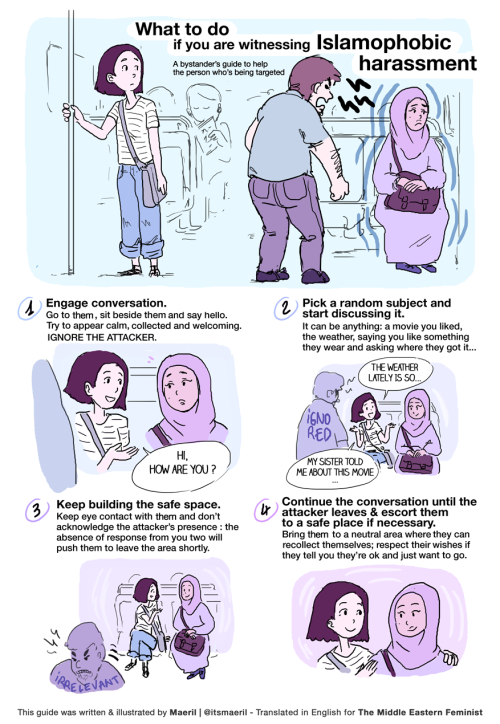Understanding Bystander Intervention
 Last week I attended a community workshop where the topic was on how best to approach bystander intervention. With the recent rash of hate crimes, this prevention method is now more important than ever. In theory, bystander intervention is a “philosophy and strategy for prevention of various types of violence, including bullying, sexual harassment, sexual assault, and intimate partner violence.”
Last week I attended a community workshop where the topic was on how best to approach bystander intervention. With the recent rash of hate crimes, this prevention method is now more important than ever. In theory, bystander intervention is a “philosophy and strategy for prevention of various types of violence, including bullying, sexual harassment, sexual assault, and intimate partner violence.”
However, in practice, many people have a fear of getting involved in active incidents for a variety of reasons, namely out of fear they will be harmed too. I have been primarily riding public transit for over 20 years and has seen my share of hostile interactions, including ones involving weapons. Using a public space like a bus or a train exposes you to the best and worst of humanity. I think I have been guilty of not intervening when sh*t goes down. My fear is that you don’t know what the perpetrator is going to do if you get involved.
For instance, I remember riding the Orange Line about 15 years ago and getting off at Mass Ave late at night to meet my boyfriend at the time when I saw a man choking a woman’s neck on the platform. Another man who got off the same car with me immediately jumped in and pushed the perpetrator of the victim. Here is where it got strange. The victim turned around and started hitting the man who just helped her! The transit police rushed onto the platform at that moment and almost arrested the man who tried to help the woman. Luckily, myself and others on the platform told the police that he was actually helping the woman. I later found out that the attacker was a pimp and he was mad at that woman – his prostitute – because she didn’t pay him and they were both high.
I believe that situation scared me off from wanting to get involved in other incidents. Whenever anything goes down on the train or the bus now, I tend to look down at my Kindle, turn up the music on my iPod and zone out. I know this is not a good thing, but this mentally crippling habit turns on inside of me automatically.
But what if you see someone being harassed for being Muslim, transgender or for their skin color? I would like to think I would speak up on behalf of the victim, but I wasn’t sure if I would have the courage to do anything until I went to this community workshop.
The facilitator gave out this really thoughtful illustration on how to deal with an incident and I think it gave me a little more confidence.
It was illustrated by French Muslim illustrator Maeril, who says the following about this illustration:
This is an illustrated guide I made as part of my co-admining work at The Middle Eastern Feminist on Facebook! It will be published there shortly. The technique that is displayed here is a genuine one used in psychology – I forgot the name and couldn’t find it again so if you know about it, feel free to tell me!
Some could say: “Yes but you can use that technique for instances of harassment other than Islamophobic attacks!”, and my reply is: Sure! Please do so, it also works for other “types” of harassment of a lone person in a public space!!
However I’m focusing on protecting Muslims here, as they have been very specific targets lately, and as a French Middle Eastern woman, I wanted to try and do something to raise awareness on how to help when such things happen before our eyes – that way one cannot say they “didn’t know what to do”!
I’d like to insist on two things:
1) Do not, in any way, interact with the attacker. You must absolutely ignore them and focus entirely on the person being attacked!
2) Please make sure to always respect the wishes of the person you’re helping: whether they want you to leave quickly afterward, or not! If you’re in a hurry escort them to a place where someone else can take over – call one of their friends, or one of yours, of if they want to, the police. It all depends on how they feel!
Please don’t hesitate to share this guide as it could push a lot of people to overcome bystander syndrome!!
Also, the American Friends Service Committee created their own do’s and don’ts guide for bystander intervention, which you can read here.
